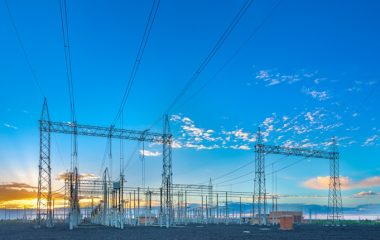
Photo: Mariana from Pixabay
A joint artificial energy island in the Black Sea would be one of the best solutions for Bulgaria and Romania to tackle grid challenges and pave the way for tapping their offshore wind potential, according to a study produced by Bucharest-based think tank Energy Policy Group (EPG).
The report, titled Offshore wind – the enabler of Romania’s decarbonisation, builds on the results of the first EPG study that estimated the technical potential of offshore wind in the Romania’s part of the Black Sea at 94 GW, out of which 22 GW could be installed as fixed turbines.
The authors of the report propose innovative solutions for overcoming grid-related challenges, making joint regional planning and joint development between Romania and Bulgaria a crucial tool for turning offshore wind into a major enabler of decarbonization in Romania and Southeast Europe.
An energy island would bring valuable interconnection capacity with other Black Sea countries, such as Turkey and Georgia, as well as Azerbaijan
Of note, the idea of an energy island is not new, and the first ones are being developed by Belgium and Denmark in the North Sea. According to another report, the Bulgarian territorial waters in the Black Sea offer 116 GW of technical wind potential, 26 GW of which can be utilized in accessible territories with the currently available technological solutions.
Last year, Bulgarian officials said that negotiations were underway with Romania on the construction of an offshore wind farm in the Black Sea.
According to the EPG report, a Romanian-Bulgarian energy island would be an efficient and scalable solution to unlock large-scale offshore wind deployment, as well as bring valuable interconnection capacity with other Black Sea countries, such as Turkey and Georgia, as well as Azerbaijan, drastically improving energy security and contributing to the regional price stability.
The recently announced underwater HVDC cable will be a stepping stone in the process
The recently announced underwater HVDC cable to be built by Romania, Azerbaijan, Georgia, and Hungary will be a stepping stone in the process, the EPG said.
According to the report, offshore wind farms take between five to 10 years to be developed, with an EU-average of seven years, so it means there is a good chance for Romania to connect its first wind offshore capacity to the grid before 2030.
Of note, almost a year ago, wpd announced plans to install offshore wind farms with a combined capacity of 1,900 MW, which could be the first of their kind in Romania and the Black Sea.
An artificial Romanian-Bulgarian energy island would bring the LCOE to EUR 85/MWh
The authors of the report assess that by 2030, the levelized cost of energy (LCOE) for fixed offshore wind power in the Romanian region of the Black Sea will be EUR 71/MWh, while for the later development of floating offshore wind the LCOE would be EUR 94/MWh.
A joint project between Romania and Bulgaria, including in the LCOE the costs of an HVDC connection to the Constanța Sud station, as indicated in the reference scenario for fixed offshore wind, would bring the total cost to EUR 79/MWh for a 3 GW installed capacity.
Adding an artificial energy island would bring the LCOE to EUR 85/MWh, assuming the capital investment for the energy island is split equally between the two countries.
The total CAPEX costs allocated to Romania in an energy island project, including the 3 GW offshore wind farms, would be EUR 8.4 billion (EUR 810 million representing Romania’s share), while the resulting annual energy production is estimated at 9.8TWh, the reports reads.
Offshore wind could generate EUR 6.3 billion for Romania
EPG has also stressed the benefits of offshore wind development in creating jobs in the manufacturing, construction, and operation and maintenance (O&M) of projects, with a multiplying effect on other sectors – including a significant concentration in the Port of Constanța.
Per GW of installed power, offshore wind in Europe generates EUR 2.1 billion, and 3 GW of installed offshore wind power in Romania would generate EUR 6.3 billion or 2.6% of 2021 GDP. This could also contribute to a total of 22,000 new full-time equivalent employees (20,000 in the capital phase and 1,800 for O&M), with 15,500 in direct new jobs at the local level, the report estimates.
Romania is preparing offshore wind law
Setting up the proper legislative and fiscal frameworks for offshore wind developments is of critical importance, especially at present, at the beginning of massive deployments of offshore wind capacity worldwide. Of note, Romania has announced the adoption of an offshore wind law.
The report proposes a blend between a centralized, state-led model and an open-door, investor-led process for site-development, aiming to capitalize on the mentioned advantages, while diminishing the downsides and associated risks for investors.


















Be the first one to comment on this article.